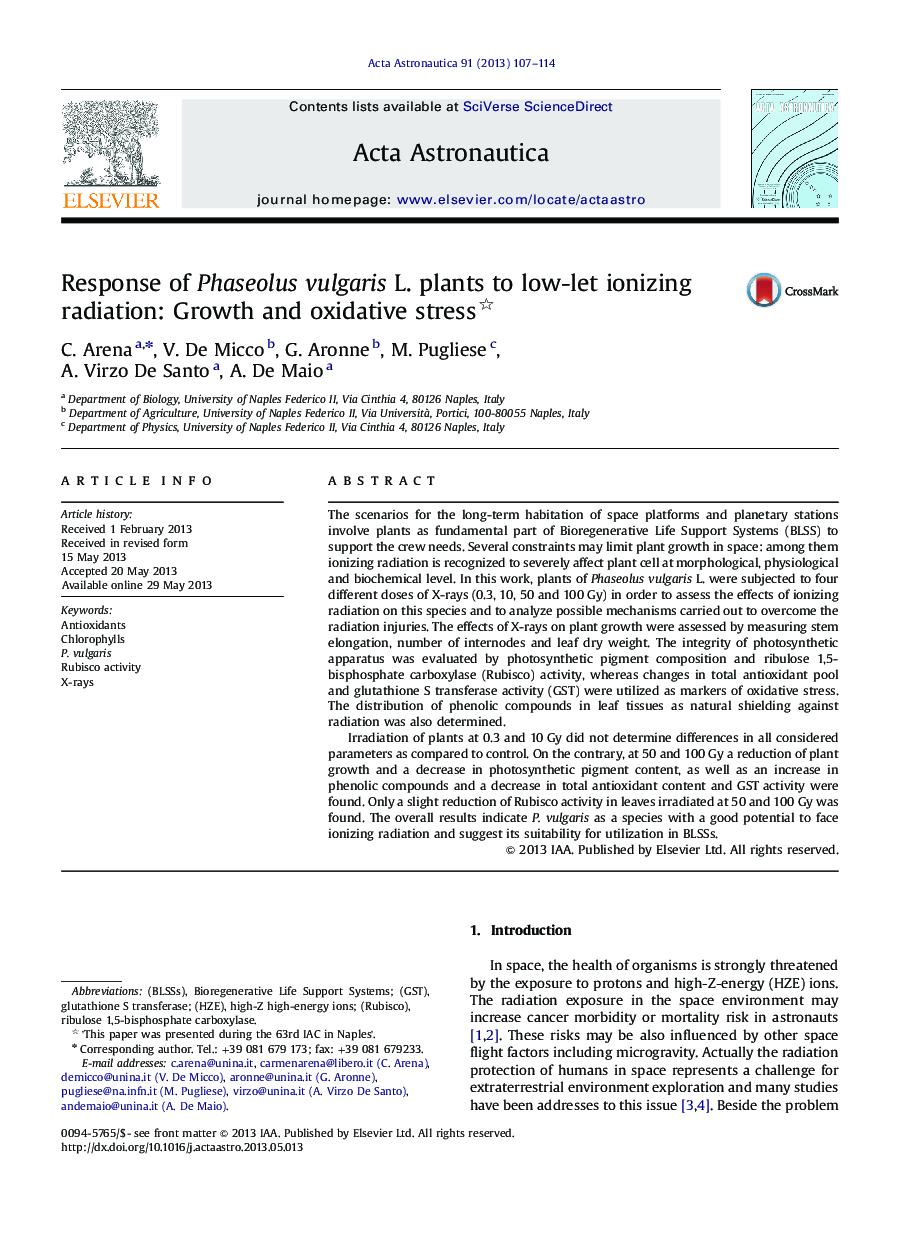| کد مقاله | کد نشریه | سال انتشار | مقاله انگلیسی | نسخه تمام متن |
|---|---|---|---|---|
| 1714710 | 1519959 | 2013 | 8 صفحه PDF | دانلود رایگان |

• Bean plants have been irradiated with four doses of X-rays: 0.3, 10, 50 and 100 Gy.
• High doses limit plant growth and increase the content of leaf phenolic compounds.
• At high doses chlorophylls, total antioxidants and S transferase activity decrease.
• Bean radioresistance is related to the induction of antioxidative-defense mechanisms.
The scenarios for the long-term habitation of space platforms and planetary stations involve plants as fundamental part of Bioregenerative Life Support Systems (BLSS) to support the crew needs. Several constraints may limit plant growth in space: among them ionizing radiation is recognized to severely affect plant cell at morphological, physiological and biochemical level. In this work, plants of Phaseolus vulgaris L. were subjected to four different doses of X-rays (0.3, 10, 50 and 100 Gy) in order to assess the effects of ionizing radiation on this species and to analyze possible mechanisms carried out to overcome the radiation injuries. The effects of X-rays on plant growth were assessed by measuring stem elongation, number of internodes and leaf dry weight. The integrity of photosynthetic apparatus was evaluated by photosynthetic pigment composition and ribulose 1,5-bisphosphate carboxylase (Rubisco) activity, whereas changes in total antioxidant pool and glutathione S transferase activity (GST) were utilized as markers of oxidative stress. The distribution of phenolic compounds in leaf tissues as natural shielding against radiation was also determined.Irradiation of plants at 0.3 and 10 Gy did not determine differences in all considered parameters as compared to control. On the contrary, at 50 and 100 Gy a reduction of plant growth and a decrease in photosynthetic pigment content, as well as an increase in phenolic compounds and a decrease in total antioxidant content and GST activity were found. Only a slight reduction of Rubisco activity in leaves irradiated at 50 and 100 Gy was found. The overall results indicate P. vulgaris as a species with a good potential to face ionizing radiation and suggest its suitability for utilization in BLSSs.
Journal: Acta Astronautica - Volume 91, October–November 2013, Pages 107–114